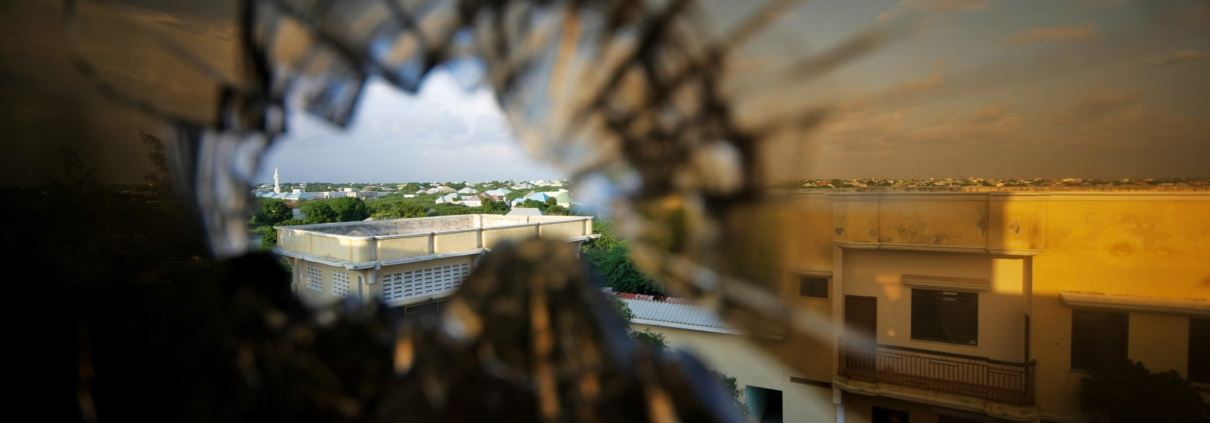BLOG
Tools for evaluating complex conflict systems
BY MAIA BLUME
At Wasafiri, we have recently been discussing different measurement techniques when trying to understand how change happens in complex conflict-affected environments. This is no easy task. As we’ve recently discussed in our blog on the conflict system in Northern Mozambique, local dynamics are often intertwined with national and regional political and socio-economic systems, rendering any effort to measure change in a conflict setting alone difficult to do.
If we take a step back and think about how conflict happens, it becomes easy to understand why such evaluation is a complicated undertaking. Conflict between groups (be they different clans and tribes, or between non-state actors – such as Al Shabaab – and governments) emerges through a variety of different factors. Climatic pressures, for example, can force different groups to compete over ever-more limited grazing pastures or watering holes, often resulting in violent conflict. This can be fuelled by weapons smuggled into the country by, say, Al Shabaab, opportunistic businessmen, or other tribal militias in neighbouring countries, that benefit from poorly managed and patrolled national boundaries. In turn, the limited ability (or willingness) by formal systems to provide safety and security, as well as other services and investments to communities living in more remote border areas, can lead to high levels of grievance and frustration with the political system, and feelings of exclusion and marginalization from economic opportunity. Ultimately, groups living in these areas can become vulnerable to recruitment into extremist or other anti-state activities.
We clearly see that conflicts do not exist in their own silos and instead, often ebb and flow with changes in dynamics across other spheres of society. Coming back to our question on how to understand and measure how change happens within this space, means that we need tools that enable us to look more holistically at the system, and specifically, at other factors outside the control of any particular program or intervention that will have a direct effect on the changes that we are trying to understand.
One such tool is what we at Wasafiri are calling system indicators. These indicators can be either quantitative of qualitative in nature, but force us to think about the key factors that exist in the wider system that are likely to affect change (either negative or positive). As such, they do not look at program outcomes or stated impacts at all; instead, they are intended to look at other factors outside our immediate control that we believe will affect whether change will happen and whether that change will be positive or negative. A few examples, and reasons why we would choose these indicators, based on our post linked above on conflict dynamics in northern Mozambique, are:
- Winners of the 2019 presidential, legislative and provincial elections in Mozambique. Political dynamics in Mozambique are closely intertwined with natural resource management. Cabo Delgado and surrounding regions are extremely resource rich and the profits often go to finance illicit activity that changes in the political composition of the country’s leadership could disrupt or further enable. Moreover, the diverse communities present in this area have varied relationships with the current political dispensation. The nature of the government leadership could impact the ability of criminal or extremist actors to finance their operations or remain under some sort of political protection, as well perceptions within communities of power and marginalisation.
- Nature of the engagement between private security firms and local communities. The extractives industry is growing in the region, with large deposits of natural gas, gemstones, timber, and to a lesser extent oil. Private security firms are contracted by these companies to ensure the safety and security of their workers and often have relatively poor and combative relations with local communities, fuelling frustrations and grievances, and potentially increasing conflict and violence in the area.
- Percentage of extractive jobs going to local residents. Reports indicate that many jobs in the extractives industry are being offered to young men from other parts of Mozambique and the region at large, rather than tapping into the local labour source. With high levels of unemployment in the area – particularly amongst youth – communities are extremely frustrated that they are not benefiting from the jobs their region’s resource wealth is bringing them. Such anger strengthens grievances and hostility toward the state (for not economically supporting local communities) and the international companies working in the region and can make certain groups more vulnerable to radicalisation and extremism.
Needless to say, these are not easy indicators to track and measure, and which indicators we choose (and how we measure them) also largely depends on the type of intervention we intend to implement. However, seeking to gain a more holistic understanding of the nature of conflict dynamics across a region helps us to better understand if programs are likely to be successful and achieve their intended outcomes, and if not, why not. Using tools and techniques that enable us to probe deeper and further into a complex system is critical for any sort of systems-based or complexity-aware evaluation. Otherwise, we are missing a huge chunk of the picture.








